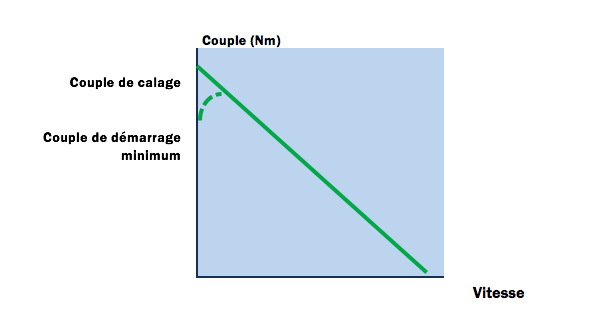Once you’ve determined the power of your air motor, to make the best choice, you should know the environment in which the motor will be used and the characteristics of the application. Air motors have a wide operating range. In many cases you’ll find several motors capable of meeting the same need in terms of power, torque, and speed.So how to choose the right motor and what are the selection criteria?

On this drawing you can see that for the speed and torque required you can choose any of the 3 air motors. Severals possibilities are correct.
So how to choose the motor that will fit the best your requirements?
Three criteria will allow you to choose the right motors, the one that will fit perfectly your application :
Maximize the energy efficiency ; assure a reserve power (in case of load increase) ; importance of stall torques and starting torques under load.
Energy efficiency

To maximize an application’s energy efficiency, we will choose a motor that, given the required torque in operation at working point (C) provides a rotational speed (V) such that one is the closest to the motor optimal working point (PF) that has the maximum power (Pmax).
A power reserve

If we want to maintain constant speed in case of torque increase, it is necessary to consider a power reserve. This is obtained by choosing an air motor with speed at working point, higher than the speed at maximum power (When speed is not stable, it may be necessary to consider limiting torque system in order not to reach maximum torque allowed on the air motor shaft).
In this case, we will choose a motor whose rotational speed at working point in normal use is greater than that of the motor optimal working point.
Thus, at the time of the hard point, the required torque will increase from C1 to C2 and the speed will decrease from V1 to V2, and the delivered power will increase from P1 to P2.
Stall torques and starting torques under load

The motor's working environment is also an important element to take into account when choosing the motor’s options and accessories:
Once the choice is made by considering all these criteria, your air motor offers reliable and safe use. From the time where adjustments are made, the motor may be used without skills or specific certification.

+ 33 (0) 4 75 40 27 15
sales@modec.fr
ZI Sirius Quatre
80, allée René Higonnet
26760 Beaumont-lès-Valence, FRANCE
© Tous droits réservés - Modec - Création : ARKOD